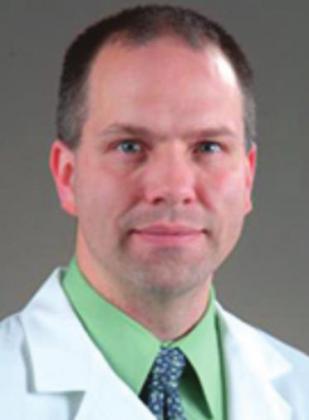SPINAL FUSION SURGERY is one of the more commonly performed procedures in the United States, with nearly half a million people going under the knife every year. At The University of Toledo Medical Center, a high-tech robotic tool is helping surgeons preform those procedures more precisely, lowering risk and improving patient outcomes.
The device, which is produced by the medical equipment company Medtronic, combines advanced imaging and 3D mapping technology with robotic guidance to place implants such as spinal screws more accurately. Obtaining imaging in the operating room ensures appropriate instrumentation and drastically reduces the chance a patient will need an early follow-up surgery.
UTMC is one of the first centers in the region to acquire the technology, with the first surgery taking place in February. “This is sort of the next evolution of image-guided spine surgery,” UTMC neurosurgeon Dr. Jason Schroeder said. “The robotic guidance is going to help us place screws more accurately, particularly in places that might be more difficult to reach or in patients whose anatomy makes spine surgery more challenging.”
An estimated 80% of people will experience back pain at some point in their lives. In the majority of cases, some combination of time, physical therapy, over-the-counter anti-inflammatory medications, or prescription muscle relaxers will bring relief. “Most people who have back pain don’t need surgery,” Schroeder said. “However, for those who haven’t been able to find relief, spinal fusion may be an appropriate option. Most commonly, we do the procedure because of trauma, degenerative problems, or spinal deformities such as scoliosis.”
In the procedure, two or more vertebrae are fused together to heal as one single bone. Surgeons regularly use screws or other hardware to help anchor the bones in place and add extra stability. Getting those screws in exactly the right place is critically important, which is where UTMC’s new robotic guidance system comes in.
Though not necessary in all cases, Schroeder said the new system—which is being used by both neurosurgery and orthopaedics—can be especially helpful in situations where normal imaging is difficult because of spinal deformities or the location within the spine.
“This hospital is very committed to ensuring we have the infrastructure and the resources needed to provide high-quality care to everyone who needs it,” Schroeder said. “This is an important addition to our services and one that will benefit patients.”
Tyrel Linkhorn is a communications specialist at The University of Toledo. ✲


